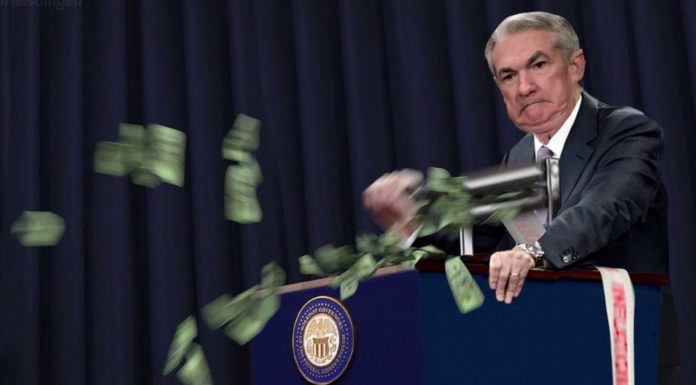(Joseph Solis-Mullen, Mises Institute) Though the effective federal funds rate remains less than 0.1 percent, the reaction of the markets and financial press as the ten-year Treasury yield crossed the 1.5 percent threshold near the start of the month reminds us just how fragile our economy’s underlying monetary framework has become over the past two decades. Regularly at a minimum of at least 4 percent in the postwar period, ten-year Treasury yields haven’t crossed that threshold in over a decade and were in steady decline from 1992 onward.
This persistently loose monetary policy forces even the most risk-averse portfolio managers to take on equity premiums previously outside their comfort zone—see J.P. Morgan’s 2021 Long-Term Capital Market Assumptions report. This is because beyond the speculation cheap money facilitates among the most risk tolerant of asset managers, persistently low effective federal funds rates and Treasury yields cause yield compression.
That is, long stretches of low interest on supposedly “safe” US Treasury securities force investors to “reach for yield,” a euphemism for taking on a higher risk premium by investing in less certain financial instruments or equities because of the lowered rate of return on safer investments. When the majority of market participants do so, however, this diminishes the returns of those exact assets.
In the bond market, for example, the rush for corporate junk bonds causes their price to rise and their yield to therefore fall, thus pushing their rate and the rate on Treasurys closer together. Under pressure to maintain their profitability and promised returns to expectant clients, fund managers no matter their risk tolerance are all forced by necessity in the same direction.
This crisis waiting to happen is magnified when inflation is cause for investor concern, when low-yield securities hand investors a negative yield at year’s end when measured in real dollars.
Today’s enormous equity bubble is in no small part a direct result of this phenomenon. With an average cyclically adjusted price-to-earnings ratio (CAPE) across the three major indexes of almost 40—that is, companies on the three major indexes are trading at an average price of forty times their earnings per share as averaged out over the last ten years—it is little wonder that Fed minutes have become arguably the single most important macroeconomic determiner of equity futures. As anyone who follows the particularly overweight tech sector knows, even a small and brief spike in rates or Treasury yields causes the NASDAQ to tumble.
The story is a familiar one. Looking at the past thirty years, we find Fed policy tinkering first creating and then bursting bubbles: keeping rates too low for too long before aggressively jacking them up. Far from “solving” the ups and downs of the business cycle, the so-called great moderation of the 1990s was a result of Alan Greenspan’s overactive monetary policy, unleashing a torrent of cheap money and facilitating takeovers at any hint of trouble.
Whether it was a currency crisis in Mexico, a government debt default in Russia, or even the Y2K scare, the answer was always the same: cheaper central bank liquidity. What followed was the dot-com bust and recession.
Even before the so-called boom in busts, the increase since 1980 in financial crises, currency crises, and bubbles, it was several government policies that kick-started the engine of financial innovation, which is wrongly blamed by many in the press and left-leaning academia for this increased economic instability: first by destroying the existing Bretton Woods monetary system through overspending on welfare programs and war, then by capping interest rates paid on bank deposits at a time when inflation meant depositors were losing money on their deposits, this while banks’ traditional revenue source, thirty-year fixed-rate mortgages, was being simultaneously made unprofitable for the same reason.
Thus, institutions, depositors, investors, and borrowers were all but pushed into the uncertain waters of increasingly complex financial innovation.
From jumbo CDs to money market mutual funds, securitized mortgages, and derivatives, financial innovation became a fixture of the US economy, rising from just 4.2 percent of GDP in 1970 to 7.4 percent in 2018. In the end, even the government became totally dependent on these products to help finance its own debt and domestic consumer spending—which itself rose from just over 60 percent in 1970 to nearly 70 percent today.
It was Wall Street that acted as a magnet for dollar holdings abroad, which funded the cheap credit, reckless spending, and risky investing that has become so familiar today. Indeed, the real wonder is that the twin pillars of fiscal and current account deficits holding up the roof have held up as long as they have. How long they will continue to do so is anyone’s guess.



